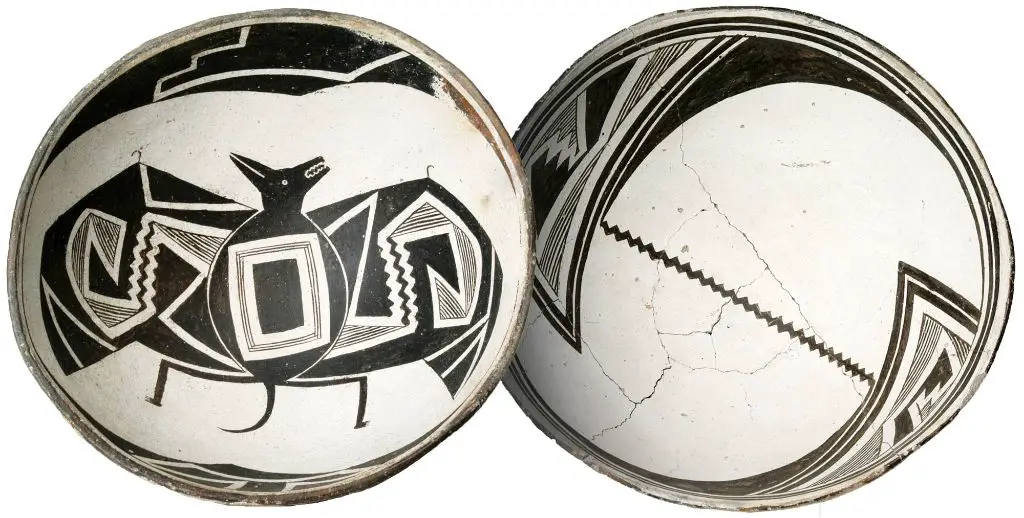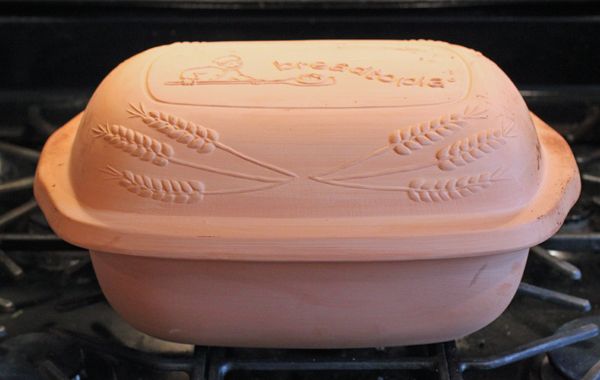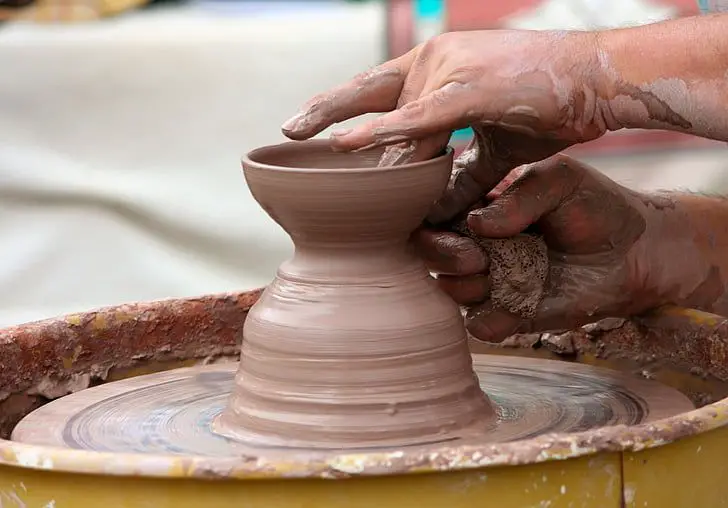What Happened To The Mimbres?
The Mimbres were an indigenous people that lived in the American Southwest, primarily in present-day southwestern New Mexico. Their culture flourished around 1000-1150 CE. The Mimbres are best known for their beautiful black-on-white painted pottery featuring naturalistic designs of people, animals, and geometric shapes.
The Mimbres excelled at irrigation and were accomplished dryland farmers, growing crops like maize, beans, and squash. In addition to farming, they supplemented their diet through hunting and gathering wild foods. The Mimbres lived in pit houses made of adobe and wood and constructed impressive cliff dwellings carved into the sides of canyons. They were organized into small villages or hamlets located along the major rivers.
Archaeologists have uncovered fascinating evidence of the Mimbres culture, especially their stunning pottery. Their artifacts provide insight into their daily lives, culture, and artistic talents. Although the Mimbres disappeared from their established territory by about 1150 CE, their legacy lives on through their enduring material culture.
Sources:
https://www.eyesofthepot.com/history/mimbres.php
Mimbres Pottery
The Mimbres culture is best known for their extraordinary black and white stylized painted pottery. Mimbres potters were highly skilled artisans who created stunning bowls decorated with depictions of daily life including hunting, fishing, and community gatherings.
The classic Mimbres black-on-white pottery featured geometric patterns along with representational figures of animals, people, and mythological beings painted in black over a white background. Images portrayed on Mimbres pottery provide a vivid window into the daily activities and culture of the people.
Common motifs include deer, rabbits, fish, insects, birds, ceremonial processions, and scenes of the Underworld afterlife. The naturalistic renderings of figures and attention to detail demonstrate the artistic mastery of the Mimbres potters.
While the pottery was initially created for ceremonial and utilitarian purposes for the Mimbres people themselves, it later became highly coveted trade items. Sadly, this led to extensive looting and destruction of sites in search of Mimbres pots over the past century [1].

Mimbres Cliff Dwellings
The Mimbres people constructed adobe pueblos built into alcoves in the cliffs of southwest New Mexico. These cliff dwellings provided shelter and defense for the Mimbres people. According to LauraBez on Flickr, the Gila Wilderness contains well-preserved cliff dwellings that the Mimbres people occupied around 1000-1150 CE before abandoning the sites.
The cliff dwellings were strategically positioned high up on cliff faces, which offered protection from flooding and made them easily defensible. The adobe walls were built right into the rock alcoves. Within the cliff dwellings, archaeologists have found evidence of living spaces, storage rooms, and kivas used for religious rituals.
Some excellent examples of Mimbres cliff dwellings can be seen in the Gila Cliff Dwellings National Monument. This site contains cliff dwellings built under natural rock overhangs along the Gila River. The complex originally included around 45 rooms clustered in five separate sites along the cliffs.
Subsistence and agriculture
The Mimbres people practiced farming and agriculture as a major part of their subsistence strategy. They grew the traditional triad of corn, beans, and squash that was common among many Native American groups in the Southwest. Corn was a staple crop that could be stored for long periods. Beans provided protein, while squash supplied vitamins and minerals (Jacobs n.d.).
In addition to farming, the Mimbres continued to hunt wild game to supplement their diet. Common prey included deer, rabbits, turkeys, ducks and other birds (Anyon et al. 1981). They used bows and arrows as well as traps and snares for hunting. Agriculture provided a reliable food source, but wild plants and animals remained an important part of the Mimbres diet.
The Mimbres maximized crop yields through innovative irrigation techniques like floodwater farming along river banks. They built extensive irrigation canals to direct water to their fields (Jacobs n.d.). Farming supported the growth of larger, more permanent villages that housed hundreds of people by 1000 CE.
Social organization
The Mimbres culture had a remarkably egalitarian social structure, with no strong hierarchies or classes. According to Archaeology Southwest, the Mimbres lived “in small groups of extended families.” Households tended to consist of clusters of pithouses, suggesting an organization around kinship groups. There is little evidence of marked social stratification or centralized leadership roles.
This relatively egalitarian structure stands in contrast to some other Southwest cultures like the Ancestral Puebloans, who developed more complex class systems and political organization over time. The Mimbres do not appear to have had persistent inequalities in wealth or status between different groups or individuals.
Overall, archeological evidence indicates the Mimbres society was organized around extended family groups living together in small settlements, with no strong hierarchies or leadership roles beyond the basic social unit.
Religious beliefs
The Mimbres people had deep reverence for nature spirits and animals, as evidenced in their intricate pottery featuring depictions of figures like lizards, insects, rabbits and birds. Many of their vessels were interred with the deceased in ritual burials, signifying the role of animals as guides or protectors in the afterlife. As described in a 1992 journal article analyzing Mimbres burial practices, “Most of [the pots] have been found in burials beneath the floors of rooms…This context implies these pots and their scenes had religious meaning.” (Source) The purposeful burial of these vessels demonstrates their spiritual importance and connection to Mimbres views on death and the afterlife.
Mysterious disappearance
One of the most intriguing aspects of the Mimbres culture is their sudden and unexplained disappearance around 1130 CE. Archaeologists have discovered many permanent Mimbres villages, some containing up to 200 rooms, that were abruptly abandoned during this period. These settlements show no signs of violence or invasion, with valuable items left behind. This suggests the Mimbres left voluntarily, but the reasons remain a mystery.
The leading theory is that a prolonged drought or other environmental changes made it impossible for the Mimbres to sustain their villages. Tree ring data indicates that a 50-year drought afflicted the region from 1130 to 1180 CE. With their intricate irrigation systems dependent on river water, the Mimbres may have been forced to leave their permanent villages and return to a more nomadic lifestyle.
However, other evidence suggests the Mimbres relocated but did not vanish entirely at this time. Some scholars believe they migrated south and integrated with other cultures in northwest Mexico. Nonetheless, the remarkable disappearance of their distinct culture and artistic traditions around 1130 CE continues to intrigue researchers.
Theories on where they went
There are two main theories on where the Mimbres people went after they abandoned their villages and cliff dwellings in the late 1200s CE.
One theory is that they migrated north to join other Puebloan groups like the Hopi or Zuni. Archaeological evidence shows similarities between Mimbres pottery designs and later Hopi pottery, suggesting contact and shared cultural elements. Some oral traditions mention groups migrating from the south. However, clear evidence directly tracing the Mimbres to specific modern Puebloan groups is lacking.
The other leading theory is that the Mimbres moved south into northern Mexico and intermingled with groups there. This theory is supported by studies showing similarities between Mimbres pottery designs and pottery found at Casas Grandes in Chihuahua, Mexico. This suggests the Mimbres migrated south and contributed to the ancestral cultures of groups like the Tarahumara.1
While the exact fate of the Mimbres remains unknown, these two theories provide plausible explanations for where the people may have gone after abandoning their heartland villages in southwest New Mexico in the late 1200s CE. Further archaeological research may shed more light on this enduring mystery.
Legacy and descendants
The Mimbres left behind a rich artistic legacy, most notably in their distinctive pottery designs. Mimbres pottery is characterized by bold geometric patterns and vivid images of animals, people, and mythological figures 1. The fine detail and artistry of Mimbres pottery has made it highly prized by museums and collectors. Many examples can be seen at the Maxwell Museum of Anthropology in Albuquerque and the Amerind Museum in Dragoon, Arizona.
There are also indications that the Mimbres people may have connections to modern Puebloan groups like the Hopi. Legends and oral traditions of the Hopi mention the “Hisatsinom” or “ancient people”, who are believed to be ancestors of the Hopi that lived in the southwestern United States. Some scholars theorize the Hisatsinom could refer to the Mimbres, based on similarities between Mimbres and Hopi culture such as kiva architecture, ceramic designs, and rituals. More research is needed, but the Mimbres may have descendants among the modern Pueblo peoples.
Conclusion
The Mimbres were a fascinating ancient Native American group who lived in what is now southwest New Mexico between around 1,000 AD and 1150 AD. They were known for their unique black-on-white painted pottery featuring stylized figures of humans and animals, as well as their elaborate adobe and stone cliff dwellings. They were largely an agrarian people who supplemented their farming of crops like corn, beans, and squash with hunting and gathering. The Mimbres had an intriguing ceremonial culture centered around ancestor worship and fertility rituals. Around 1150 AD, the Mimbres disappeared for unknown reasons. Theories for their disappearance range from drought and environmental factors, to invasion from outside tribes. Despite their relatively short period of flourishing, the distinctive culture of the Mimbres left an indelible mark on the archaeological and historical record. Studying vanished cultures like the Mimbres provides a window into understanding the diversity of human societies over time and how cultures can adapt in dramatic ways.
Even though they disappeared centuries ago, the remnants of Mimbres material culture and heritage endure and provide opportunities to learn more about who they were as a people. Their pottery and dwellings enable researchers to reconstruct elements of their daily lives, social organization, and belief systems. The unsolved mystery of their disappearance also sparks scientific inquiry into the various factors that may have led ancient cultures to abandon their homelands. By continuing to preserve and analyze the archaeological evidence left by vanished groups like the Mimbres, we honor their legacy and gain broader insight into the scope of human experience over the centuries.


